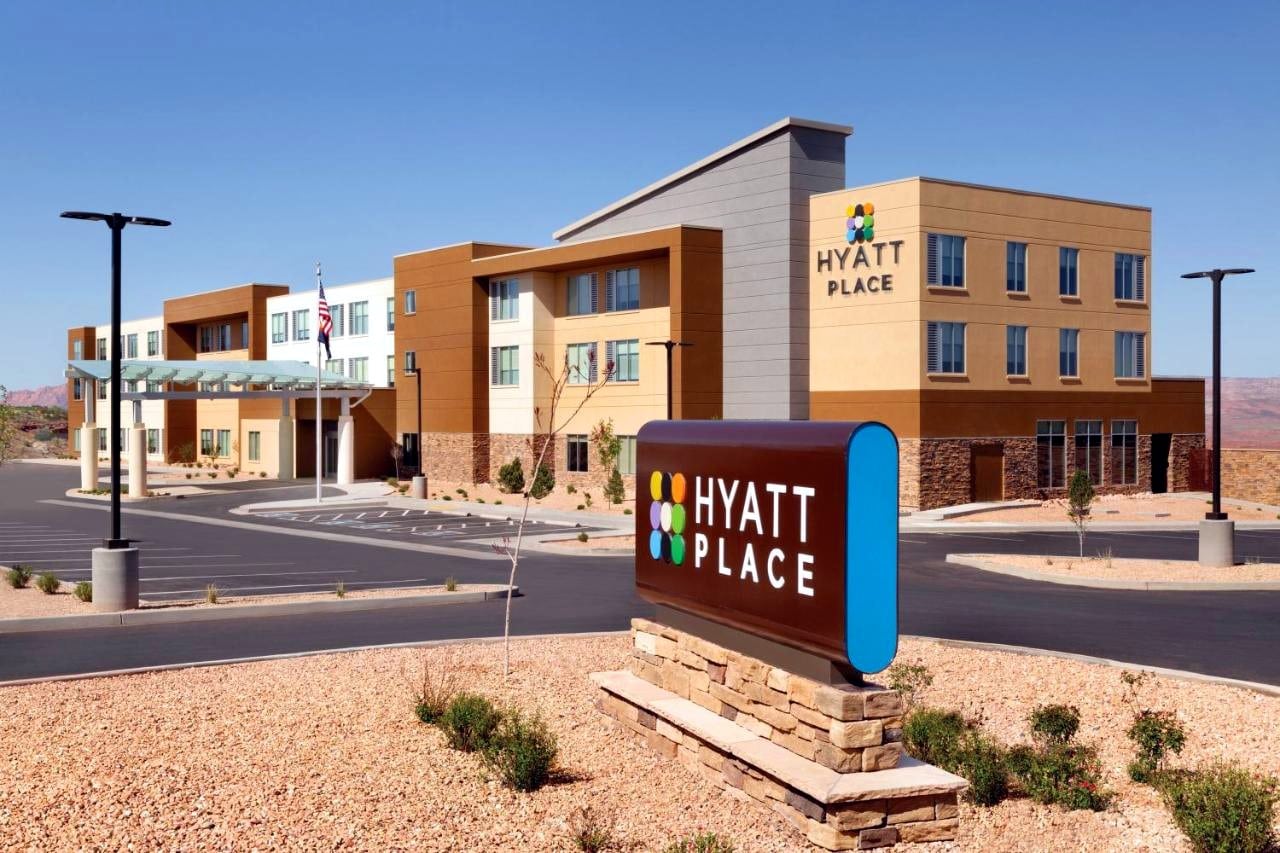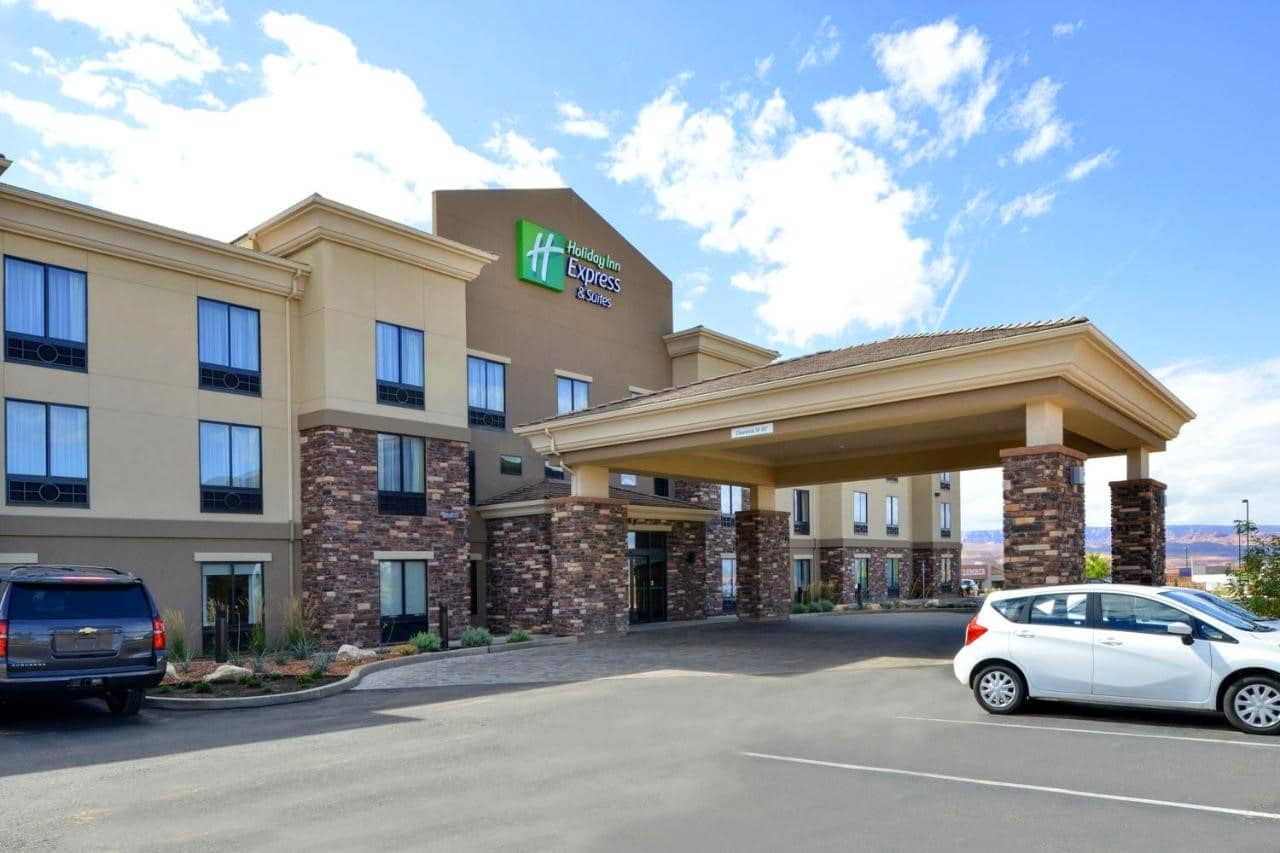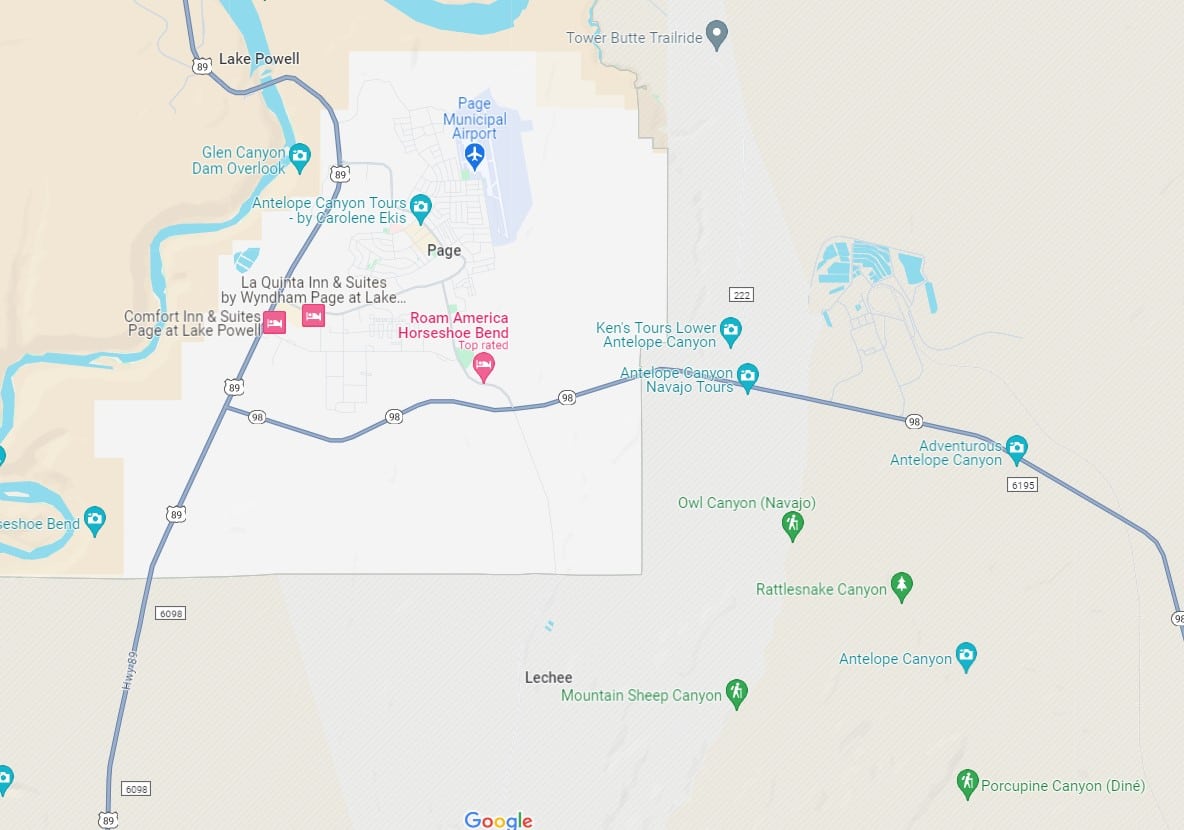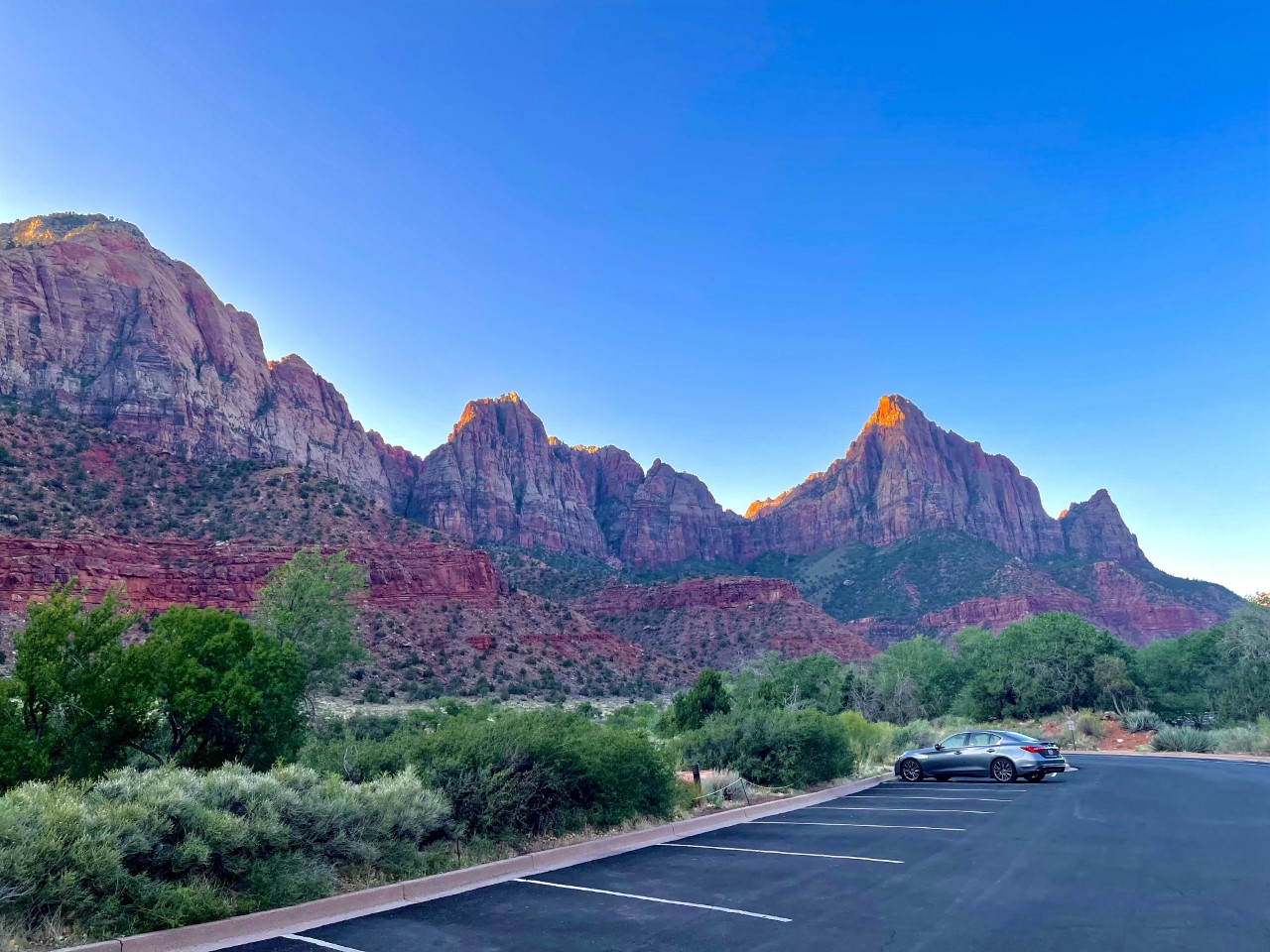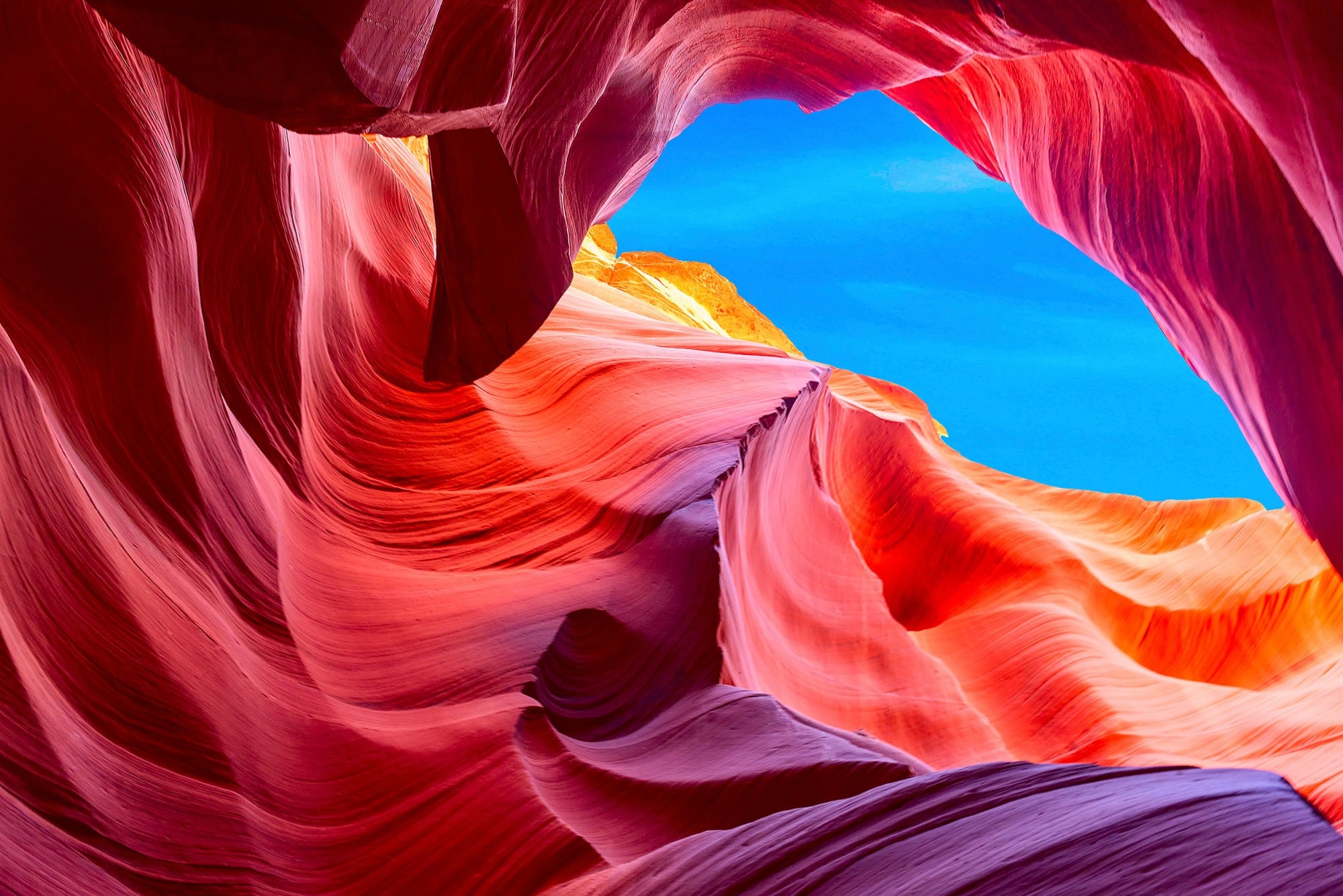
Located in the American Southwest, Antelope Canyon (SV) appears as a mesmerizing labyrinth of smooth, flowing sandstone. Located near Page, Arizona, this slot canyon is a favorite destination for photographers and adventurers. There are upper and lower Antelope Canyons which include separate other canyons such as Rattlesnake Canyon, Mountain Sheep Canyon, Porcupine Canyon, Owl Canyon, and of course Antelope Canyon.
The Creation of Antelope Canyon
Antelope Canyon is a striking example of nature’s power to sculpt the landscape. It was formed by the relentless force of water and wind over millions of years. Rainwater, especially during monsoon season, would rush into the basin above the slot canyon sections, picking up speed and sand as it rushed into the narrow passageways. Over time, this erosion process smoothed the hard sandstone into the flowing shapes and the ‘flowing’ walls we see today. Such power is how the Grand Canyon was created from the Colorado River which carved down its 6,000-foot landscaped walls over millions of years of water erosion.
Arizona is situated in the region affected by the North American Monsoon. This monsoon period usually commences in the early part of June, marked by the formation of vigorous thunderstorms in central and southern parts of Mexico. As the month progresses, particularly from the middle to the end of June, these thunderstorms gradually shift towards the International Border, eventually reaching into Arizona.
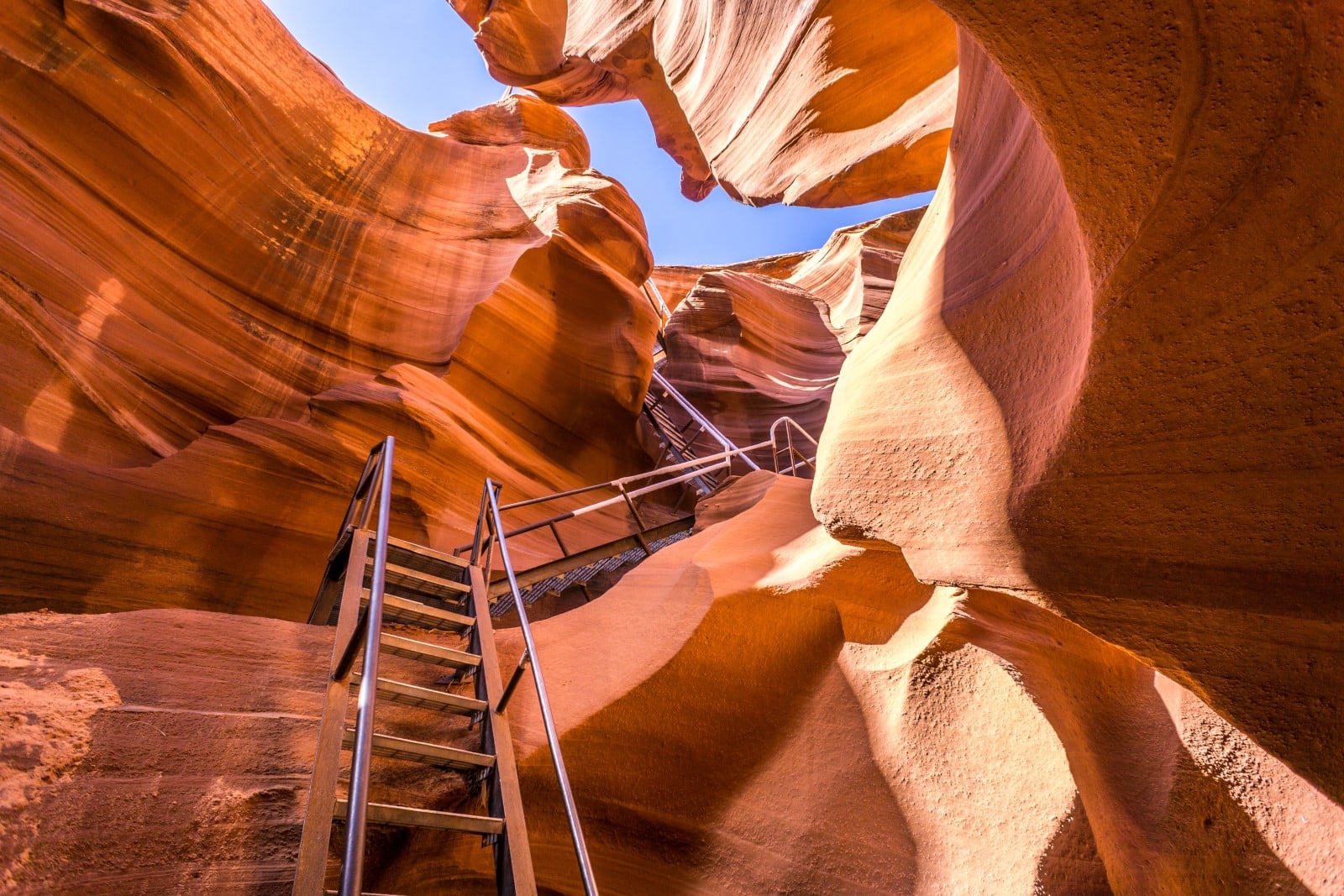
What Gear to Bring
- Footwear: Sturdy, closed-toe shoes are a must. The canyon floor can be uneven and slippery.
- Clothing: Wear light, breathable clothing during summer, and warm layers in the winter. The canyon can be cooler than the outside temperature.
- Hydration: Bring plenty of water. The Arizona heat can be intense, and dehydration is a real risk.
- Camera Gear: Photographers should bring a camera with a good low-light performance. Tripods are allowed in the Upper canyon but not in the Lower. The newer smartphones can now get stunning on-the-fly pictures and the phones are also small, lightweight and easy to carry.
- Flashlight or Headlamp: This is especially useful in the Lower Canyon, where some areas can be quite dark and obscured from sunlight.
Parking and Camping
Antelope Canyon is divided into two main sections: Upper and Lower Antelope Canyon. Each offers unique experiences and challenges.
Parking: For Upper Antelope Canyon, parking is available at the entrance. For Lower Antelope Canyon, visitors park at the designated parking area and walk to the canyon’s entrance.
Camping: There is no camping allowed directly in Antelope Canyon, but there are several campgrounds in the nearby town of Page such as Page Lake Powell Campground, as well as in the surrounding areas. Lake Powell offers camping spots, such as Mystical Antelope Canyon Tour, with beautiful scenic views.
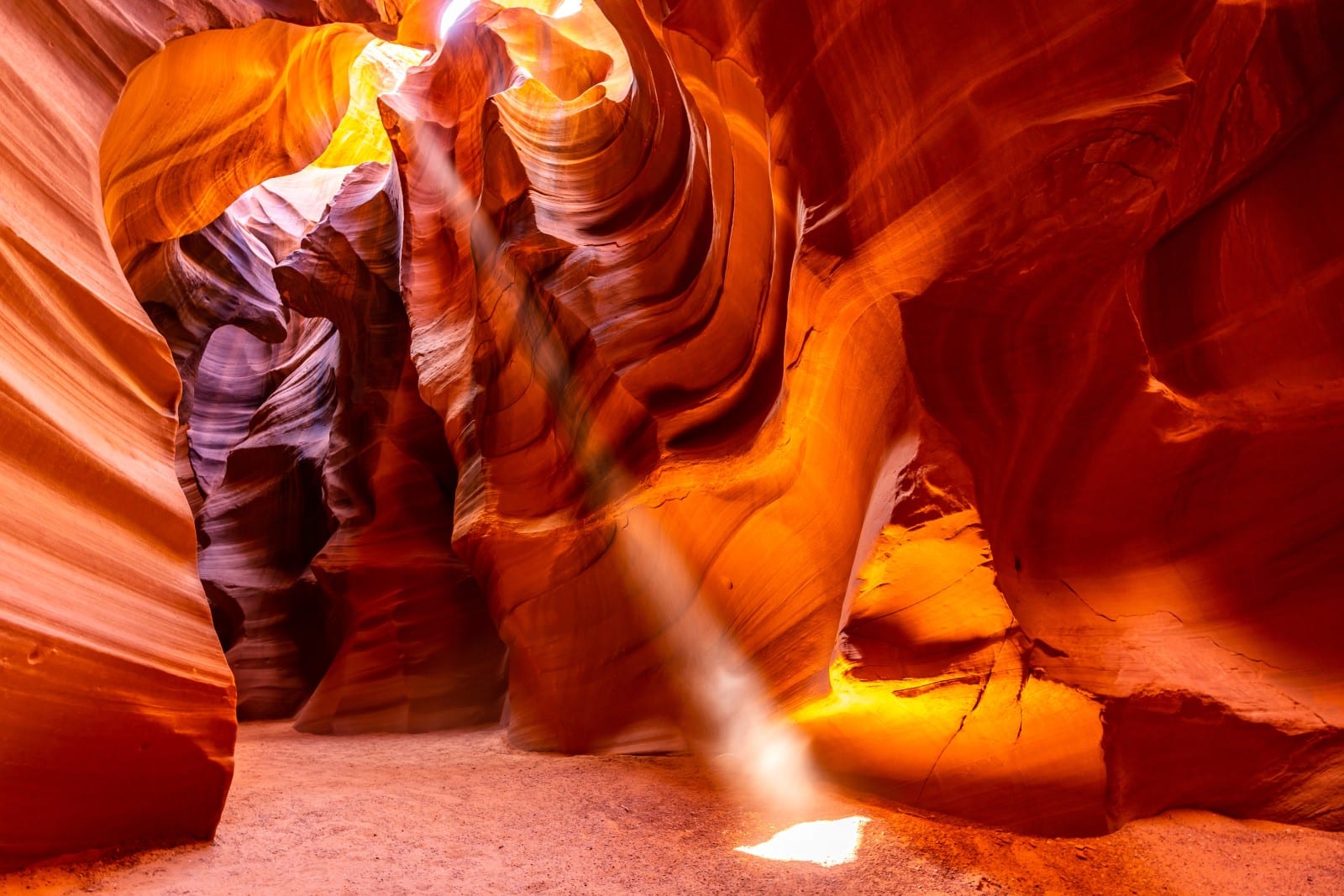
Booking a Tour
Visiting Antelope Canyon requires booking a tour with a licensed tour operator. This is both for conservation reasons and for visitor safety, as guides are knowledgeable about the canyon’s conditions, dangers, and history. There are several tour operators including Mystical Antelope Canyon Tour and Antelope Canyon Tours.
When planning a trip to Antelope Canyon, considering the use of GPS devices or satellite beacons can enhance both your safety and navigation experience. While these tools are generally more associated with backcountry hiking or remote wilderness exploration, they can still be useful for visitors to Antelope Canyon, especially if you plan to explore the surrounding areas which are more remote.
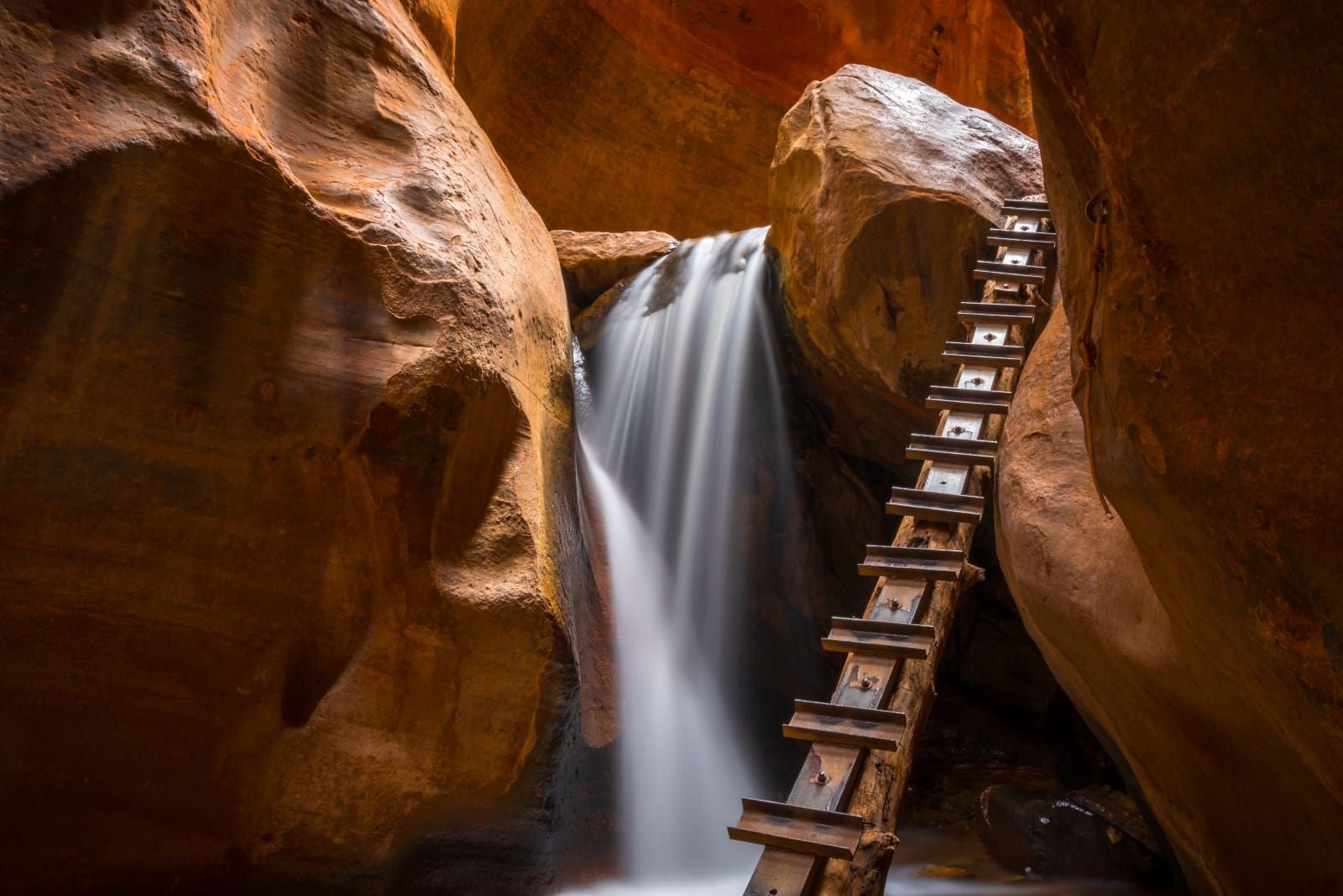
The Dangers of Flash Flooding
One of the most critical aspects of Antelope Canyon is its susceptibility to flash flooding. These floods can occur suddenly, turning the canyon into a dangerous trap for unprepared visitors. The floods are typically triggered by rainfall far upstream, not necessarily over the canyon itself, making them hard to predict. The tragic deaths in 1997, where 11 tourists lost their lives, serve as a stark reminder of the canyon’s potential dangers. Viewing our photos gives one an understanding of just how limited an escape can be.
Navigation: While GPS and Satellite Beacon devices are less critical within the confined and guided spaces of Antelope Canyon, they can be invaluable if you’re exploring the wider region around Page, Arizona. The area’s vast and sometimes featureless desert terrain can be challenging to navigate.
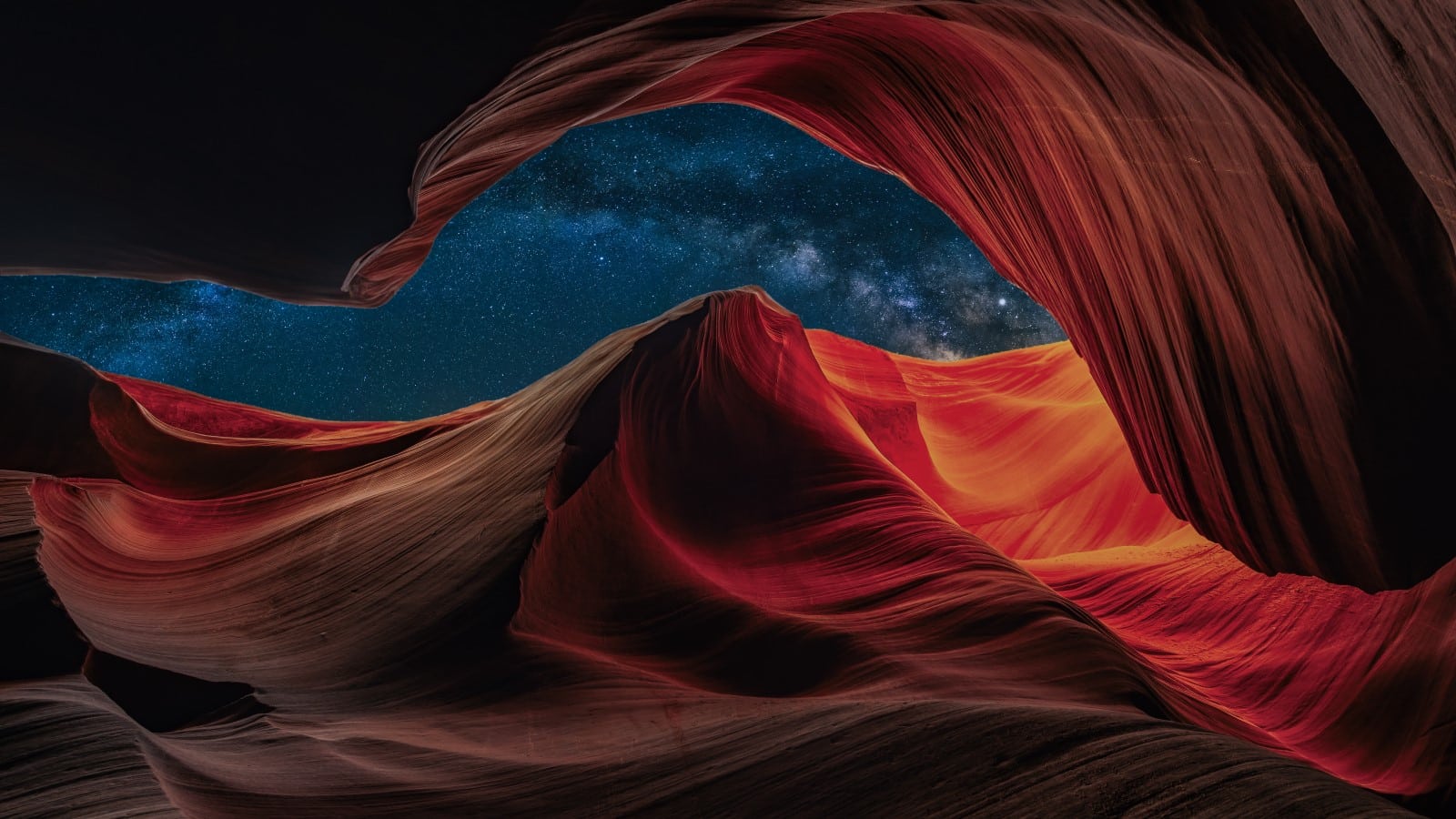
Considerations for Using GPS and Satellite Beacons
- Battery Life: Ensure your devices are fully charged and consider carrying extra power sources.
- Familiarity with Equipment: Know how to use your GPS or beacon before you head out. In an emergency, you won’t have time to read instructions.
- Coverage and Limitations: Understand that these devices are not infallible. Satellite connections can be disrupted by canyon walls or other geological features.
- Backup Navigation: Always carry a map and compass as a backup. Electronic devices can fail or run out of power.
- Check with Tour Guides: If you’re on a guided tour in Antelope Canyon, inform your guide that you have these devices. They can offer advice on their use in that specific area.
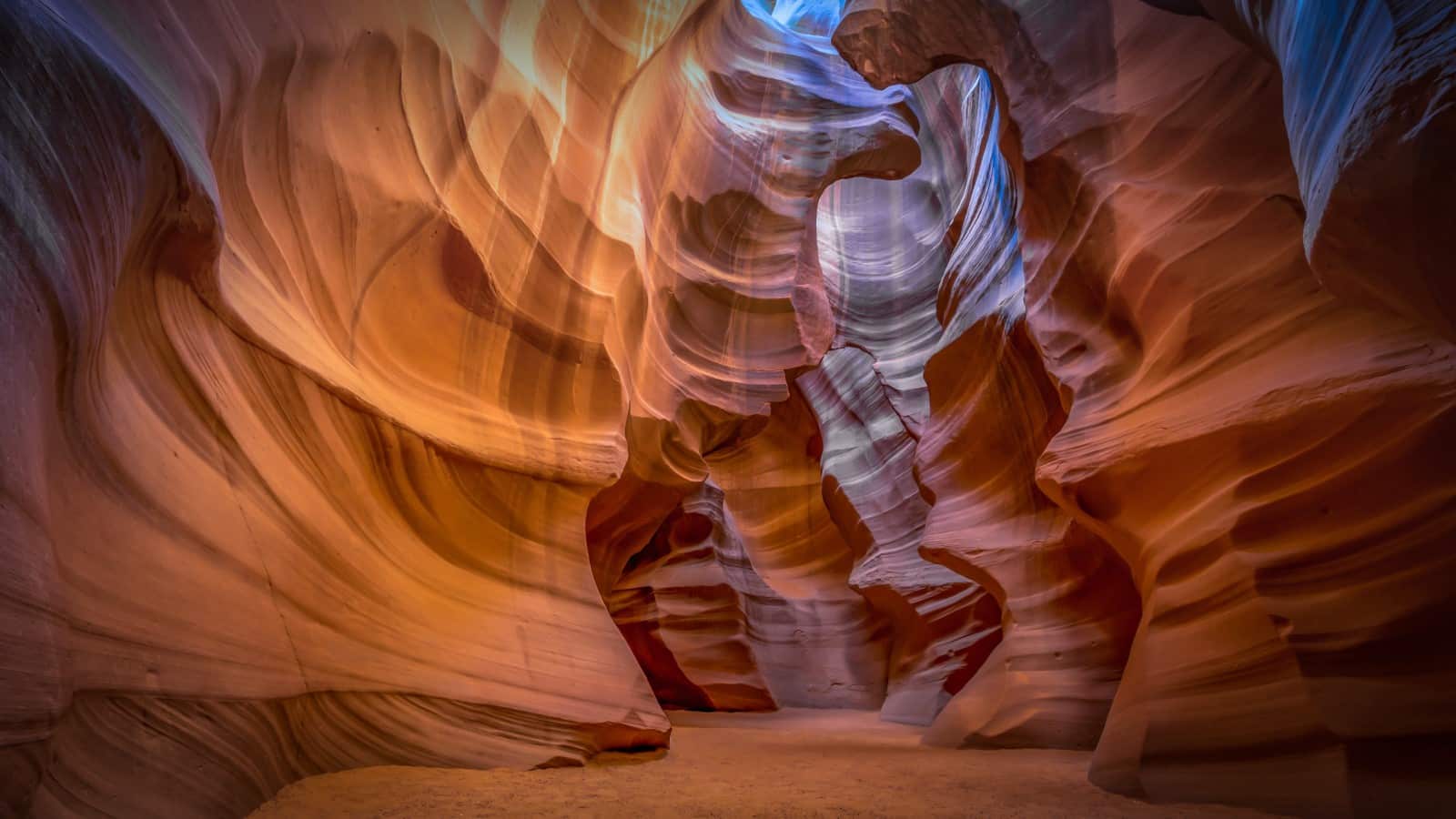
In Case of a Flash Flood in Antelope Canyon
Flash floods are a serious hazard in slot canyons like Antelope Canyon. The narrow, twisting passages can quickly fill with fast-moving water, making them extremely dangerous. Here are some survival strategies if you find yourself in a flash flood situation in Antelope Canyon:
- Stay Informed: Before entering the canyon, check the weather forecast for the entire region, not just the immediate area. Be aware that rain several miles away can trigger a flash flood where you are.
- Be Prepared: When exploring Antelope Canyon, it’s wise to carry emergency supplies like a whistle, flashlight, small first aid kit, and signaling device.
- Understand Canyon Topography: Recognize that slot canyons like Antelope Canyon are particularly dangerous because they are narrow and deep, with few exit points.
- React Quickly: If you notice any signs of a flood (e.g., sudden changes in water level or color, rumbling sounds upstream), don’t wait. Immediately seek higher ground. Your priority is to get as high as possible. Climb onto a ledge, a boulder, or any elevated area you can safely reach.
- Avoid Entering the Water: Flash flood waters are powerful and can carry large debris. Even shallow water can sweep you off your feet. Stay out of the water as much as possible.
- Stay Calm and Conserve Energy: Panic can lead to poor decision-making and exhaustion. Stay as calm as you can and conserve your energy for survival.
- Signal for Help: If you have a whistle, use it. Make visible signs for rescue personnel. If you have a cell phone or a satellite device that has reception and can access it safely, use it to call for help.
- Listen to Guides: If you are with a tour guide, follow their instructions. They are trained to handle such situations and know the canyon well.
After a flash flood: If you are stranded, wait for help to arrive. Do not attempt to navigate through the canyon as it may still be hazardous. Rescuers are trained to locate and assist in such situations.
Traveler Best Hotel Picks
